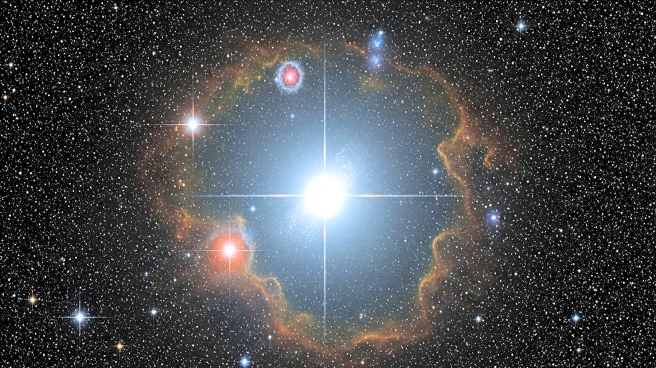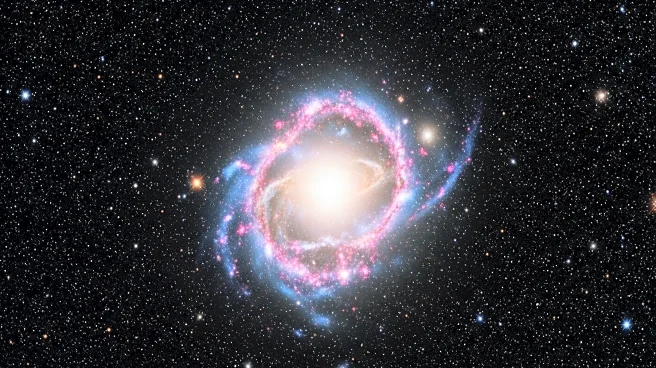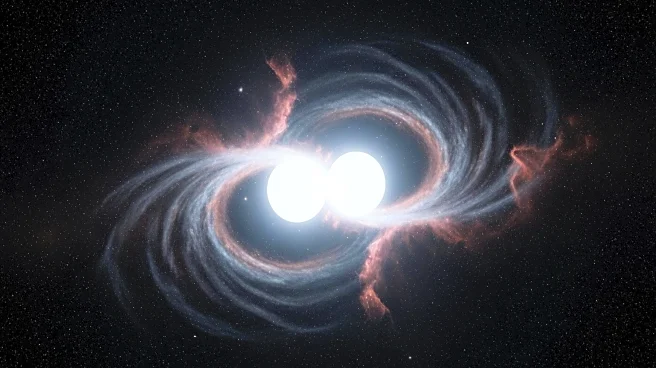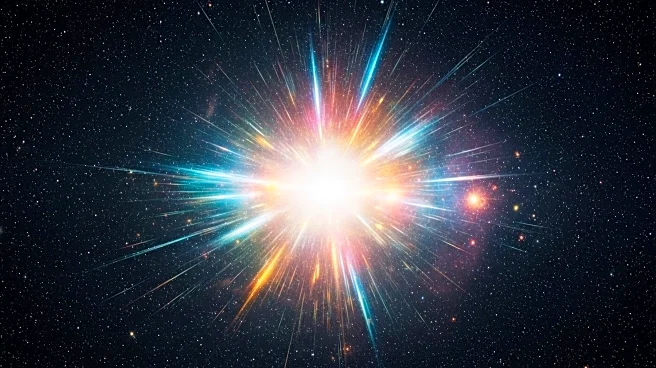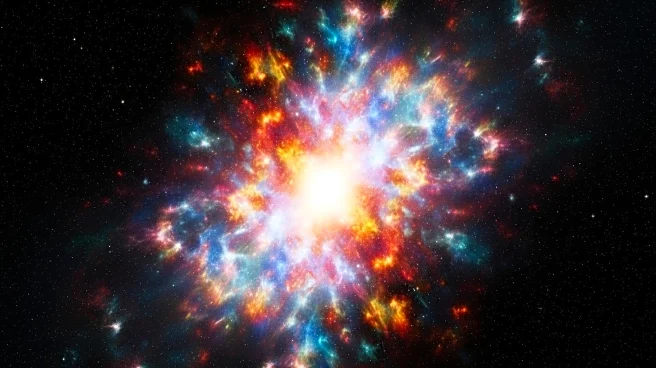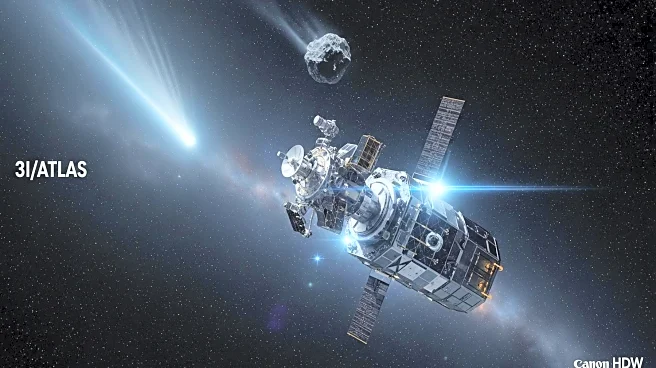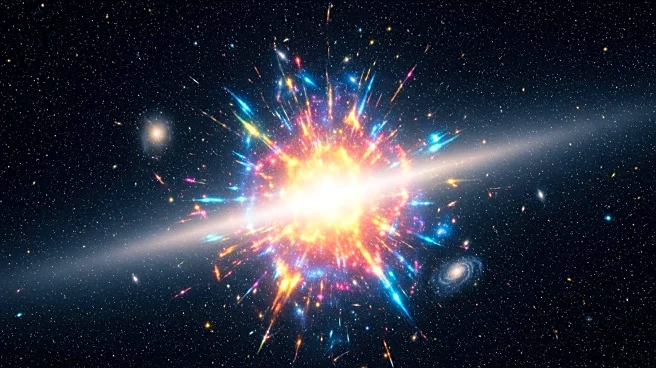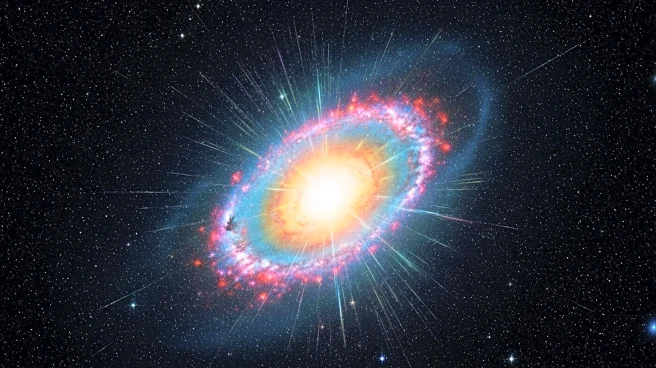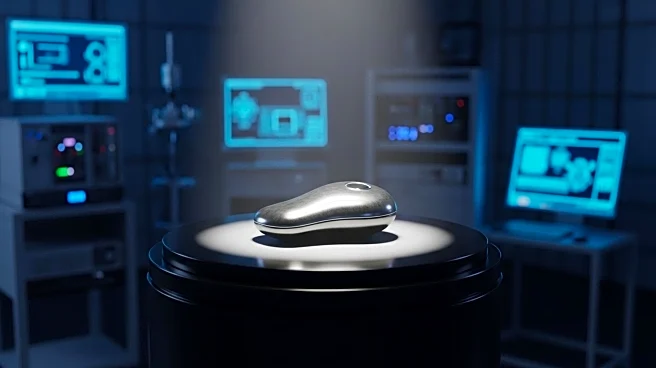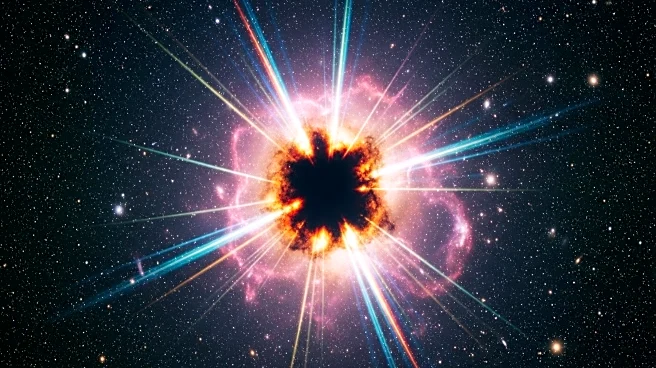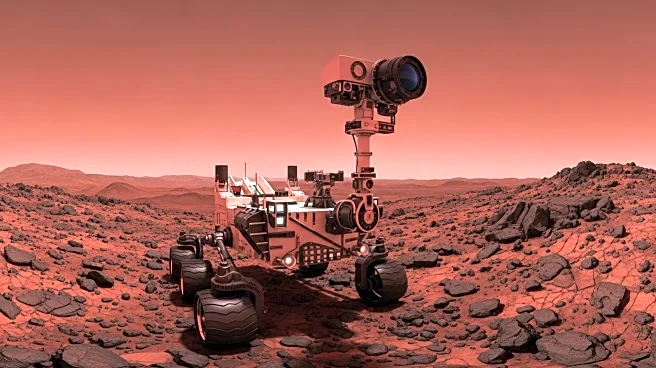What's Happening?
NASA's Hubble Space Telescope has discovered an ultra-massive white dwarf star, resulting from the merger of two stars, rather than the evolution of a single star. This finding, made through Hubble's ultraviolet observations, suggests that such rare white dwarfs may be more common than previously thought. The white dwarf, named WD 0525+526, is located 128 light-years away and is 20% more massive than the Sun. It exhibits unusual characteristics, including the presence of carbon in its atmosphere, which indicates a violent origin involving the collision of two stars. This discovery provides new insights into the formation history of white dwarfs and challenges previous assumptions about their evolution.
Why It's Important?
The discovery of WD 0525+526 is significant as it challenges existing models of white dwarf formation and suggests that stellar mergers may be more prevalent than previously believed. This has implications for our understanding of stellar evolution and the pathways to supernova explosions. The presence of carbon in the white dwarf's atmosphere, detected through Hubble's ultraviolet spectrum, highlights the importance of advanced observational technologies in uncovering hidden aspects of cosmic phenomena. This finding could lead to further research into the prevalence of such mergers and their role in the lifecycle of stars.
What's Next?
Astronomers plan to extend their research by exploring how common carbon white dwarfs are among similar white dwarfs and identifying more stellar mergers within the white dwarf family. This could contribute to a deeper understanding of white dwarf binaries and the processes leading to supernova explosions. The continued use of Hubble's Cosmic Origins Spectrograph will be crucial in detecting similar phenomena and expanding our knowledge of stellar evolution.
